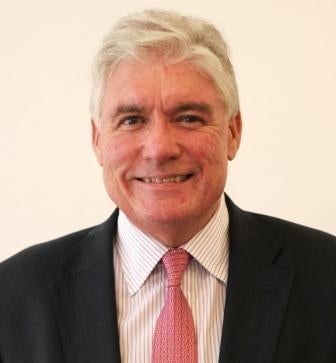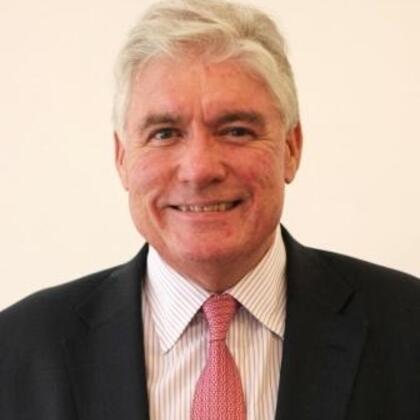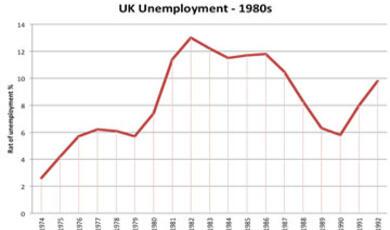Looking at globalisation and its impact on the world’s distribution of income, it is argued that, while in individual countries it may raise inequality, the overall impact of transferring incomes from richer countries to poorer ones means that for the world as a whole, the process actually reduces inequality. Paradoxically, globalisation can reduce global inequality through the transfer of income from rich to poor countries, and inequality may rise as richer members of societies cope better with the massive change.
18 September 2013
How does globalisation affect inequality globally?
Professor Douglas McWilliams
Welcome to my first lecture of the new season.
My overall theme for my three years of lectures is the economic impact for the Western economies of the industrialisation of the emerging economies which I described in my first lecture a year ago as the greatest ever economic event.
Last years’ lectures, other than the 7th lecture which was a one off which looked at the specific issue of transport in London, concentrated on the economics building blocks. So we went through the key points – how big was this compared with previous economic events, the supercompetitiveness of the emerging economies, the impact on worldwide inflation through the effect on commodity prices, updating Keynes to show the impact on economic growth in Western economies like the UK, how to boost growth by reducing the cost of living in the Western world, the impact on savings worldwide and how would win and who would lose out.
This year I am handling a number of policy issues.
Today I am dealing with the huge topic of inequality and its relationship with globalisation.
Next month the topic is should the UK adopt money GDP targets? We have a new Governor of the Bank of England, Mark Carney, who has instituted forward guidance related to an unemployment target. The lecture will look at forward guidance and an alternative way of dealing with Bank of England targeting.
My December lecture has the provocative title ‘Was Karl Marx always wrong?’ and looks at the impact of globalisation on the wage and profits relativities in the context of Marx’s labour theory of value.
In January next year I will look at one of the results of a study that we are carrying out for the Royal Navy showing how the UK will become a more export based and less consumer based economy over the years.
In February I will talk about the Euro. Amongst the factors making life difficult for the Eurozone is the differential impact of globalisation on the different Eurozone economies.
My final lecture of the main series this year is in March where I deal with the tough political issue of whether globalisation means that we in the west have to bring public spending shares of the economy into line with the much lower levels that exist in the fast growing emerging economies.
Just as I had a special lecture in last year’s series on transport in London, I have a special lecture this year. It looks at the possible inverse correlation between sporting success and economic progress and asks in particular whether the growing relative prosperity of the Australian economy in the medium term means that we should continue to keep winning the Ashes. Of course, by then we will have had the return bout after this summer’s Ashes series – and in the short term Australian economy seems to be weakening while the UK economy is strengthening so maybe this will lead to a better result for Australia this winter!
My lecture today starts with a description of the background to the inequality and globalisation debate.
I then look at the data on inequality within countries, focussing especially on the US.
Then I look at a separate but related issue which is inequality between different countries.
I then put forward a thesis about the relationship between economic development and inequality before looking at the relative roles of technology and globalisation in determining what happens to the distribution of incomes.
I then consider the role of industrial organisation. My experience as the Chief Economist at the CBI and on a quoted company main board tells me that the relationship between shareholders and senior executives is a very important part of what has happened to top incomes in recent years.
All of this is pretty heavy going, so I thought I owed you some light relief. So I am turning to a sector that has been affected by both technology and globalisation – the football premier league and its salaries to see what light they show on the income distribution debate.
Of course it is easy to get worked up about inequality and in effect throw the baby out with the bathwater.
It is important to realise that – at least if you are reasonably grown up – what this is really about is not whether some people are rich or not but instead about how many people are suffering from grinding poverty.
I will look at the data on poverty and the forecasts and consider what all this means.
I would like to place on record my thanks to Katie Evans, one of Cebr’s bright young economists, who covered this topic in her MSc dissertation and who has kindly allowed me access to her notes and research. She has eased the burden of tackling what is a huge topic immensely and I am very grateful to her.
Background to the debate
Let me now recap on my key points from last year’s lecture.
We now have intense international trade competition – the new economies are not just competitive but supercompetitive
We have a rising trend in real prices for primary products – energy, minerals, food and water which adds to inflation and squeezes living standards in the West.
As a result of this and as a result of the inflationary limits on the extent to which Western economies can devalue to price themselves into competitiveness, Western economies should assume that their trend growth will in general be slower in future while the growth in the emerging economies is absorbed.
Because of the huge Chinese savings surplus, there is downward pressure on international interest rates.
The world economy is likely to remain a lot more volatile as these trends are absorbed into the system.
Inequality – the data
First, what is happening to inequality within countries?
We are fortunate that a very useful database has been compiled at the Paris School of Economics . The main authors are Thomas Piketty and Emanuel Saez. This database focusses on top incomes which is useful, though my personal interest in inequality is more about trying to improve the conditions of the poor than worsening the conditions of the rich.
I will look in detail at the US data since this is the most consistent and has attracted a lot of attention since the latest 2012 data was published a few weeks ago. Also the US has the advantage of size and so is less influenced by erratic results or special factors.
I am going to build up the picture. Imagine the population being divided into 1000 groups by income. I will look first at the position of those from 50 to 100; then at 10-50, then at those from 5 to 10, at those from 2 to 5; at the top 1 thousandth of the income distribution and in even finer detail at the top ten thousandth.
The measure is the share of total income received by each group.
The first slide on this shows how the share of income received by the first group – those in the highest 10% of earners but not in the highest 5% has risen gradually in the post war period to get up to about the average of the share in the pre-war period.
The second slide shows in addition those in the top 5% but not in the top 1%. Their share has followed a similar path to the previous group, but the gradual rise in recent years has taken their income share back to around the top of the range achieved in the pre-war period rather than the middle as for the previous group. The other relevant point for this group is that the recovery in the share was largely post the early 1980s.
The third slide of this group adds in those in the top 1% but not in the top 0.5%. The picture mirrors that of the previous group.
The fourth slide shows the top 0.5% but not in the top 0.1%. This is more like the first group – back to the middle of the position pre-war. But the timing is different – the share is very flat post war till 1985 and then recovers very sharply.
The penultimate of these slides shows the top 0.1% - in other words the top 300,000 income earners in the US. This more or less exactly mirrors the previous group.
The final slide is the top 0.01% - the top 30,000 income earners. The movement in their share is a bit similar to that of the previous two groups but unlike them, their income share fell more in the post war period till 1985 and then recovered more strongly.
Let me now move from the US to show the analysed data for the main OECD economies from the OECD report ‘An overview of growing income inequalities in OECD countries: Main findings’ .
The chart shows that the recent rise in income inequality observed in the US is part of a more general though not completely ubiquitous trend.
The OECD concluded :
Over the two decades prior to the onset of the global economic crisis, real disposable household incomes increased by an average 1.7% a year in OECD countries. In a large majority of them, however, the household incomes of the richest 10% grew faster than those of the poorest 10%, so widening income inequality. Differences in the pace of income growth across household groups were particularly pronounced in some of the English-speaking countries, some Nordic countries, and Israel. In Japan, the real incomes of those at the bottom of the income ladder actually fell compared with the mid-1980s.
In OECD countries today, the average income of the richest 10% of the population is about nine times that of the poorest 10% – a ratio of 9 to 1. However, the ratio varies widely from one country to another. It is much lower than the OECD average in the Nordic and many continental European countries, but reaches 10 to 1 in Italy, Japan, Korea, and the United Kingdom; around 14 to 1 in Israel, Turkey, and the United States; and 27 to 1 in Mexico and Chile.
Though what is happening to the very rich is interesting, I believe that it is much more important to see what is happening to the poorer income groups.
The OECD conclusion (which is limited to a much shorter period than the US income distribution data and so has a very limited historical basis) is that:
Increases in household income inequality have been largely driven by changes in the distribution of wages and salaries, which account for 75% of household incomes among working-age adults. With very few exceptions (France, Japan, and Spain), the wages of the 10% best-paid workers have risen relative to those of the 10% lowest paid. This was due to both growing earnings’ shares at the top and declining shares at the bottom, although top earners saw their incomes rise particularly rapidly (Atkinson, 2009). Earners in the top 10% have been leaving the middle earners behind more rapidly than the lowest earners have been drifting away from the middle.
Inequality between countries
The discussion above has given a flavour of what is happening within countries. The next task is to consider what is happening between countries.
At an OECD Policy Forum on inequality, Richard Freeman, professor of economics at Harvard University, noted that “the triumph of globalization and market capitalism has improved living standards for billions while concentrating billions among the few. It has lowered inequality worldwide but raised inequality within most countries.”
The reason for this paradox is that although inequality has risen within countries, it declined significantly between countries.
This slide shows the definition of the different categories of income groupings in which countries are generally placed.
The slide shows not only the differences in incomes in the different economies but also key social indicators such as educational enrolment, life expectancy and infant mortality.
You can see that the bulk of the world’s population – 5 billion out of 7 billion - now lives in the two middle income groups, with smaller groups in rich and in poor countries.
The first decade of the 21st century has shown both the middle income groups and the poor countries catching up with the rich. The upper middle income countries have done best, mainly because of China, and the lower middle income countries, have done nearly as well, mainly because of India. The poorer countries have done much better than the richer countries but not as well as the middle income countries.
Obviously because this period includes the financial crash of 2007/08 it may exaggerate the pace at which the economies are converging but this was in fact happening before the crash and has actually accelerated, with the poorer economies doing even better, since the crash. Cebr’s latest global forecasts, out this week, indicate that in 2014 and 2015 there may be a slowing down in the pace of convergence with an acceleration in the relative pace of growth in the Western economies; much of this is due to the improved economic performance of the United States.
The conclusions of the Canadian Conference Board report support those of Professor Freeman that there has been convergence in incomes between rich and poor countries at least since 2000 on data that is unweighted by population and (because of the very large weights of India and China) since 1960 using data that is weighted by population.
Causes of the recent dispersion of incomes
What has caused the recent trends in inequality?
The first issue to be considered is the role of economic development.
One of the basic hypotheses of economic development is the Kuznets hypothesis, named after the Nobel prize winning economist Simon Kuznets. In his seminal article in 1955 he argued that as a society develops from an agricultural society into an industrialized one, inequality within that society grows. Average earnings of industrial workers increase relative to those of farm workers. As development continues, inequality among industrial workers also increases. As a society moves into the more advanced stage, the wealth starts to be redistributed, partly through government transfers and partly through the impact of the spread of education and commercial knowledge, which leads to a decline in inequality. Kuznets described this progression of inequality as an upside-down U curve—starting low in an agrarian society, rising as industrialization occurs, and finally falling as the society becomes more advanced.
His thesis is in line with my own observation about emerging economies and seems consistent with the data on incomes in developing economies.
The OECD analysis mentions the impact of labour market organisational and regulatory changes, product market and regulatory changes (particularly in financial markets), household specific issues including particularly the increase in one parent households. But it pays particular attention to the role of globalisation and that of skill biased technical change (SBTC), especially the latter. It concludes that a major part of the increase in inequality results from the nature of technical change in recent years which is biased towards the skilled income groups and against unskilled employees.
This is a fairly common result in the literature though one might wonder why technical change – which in the 19th century was generally considered to be something that weakened the position of skilled labour in favour of the unskilled – should now be considered something that helps the skilled and disadvantages the unskilled.
My tentative answer is that this is not economics but chance. It so happens that the dominant technologies of the late 20th century and early 21st centuries are information and communications technologies. And although these technologies do something even for relatively unskilled workers, they do more for skilled and disciplined workers.
Even so, it would be surprising if the items identified by the OECD are the whole story, particularly for top business executives.
Here, my experience both working at a senior level with the Confederation of British Industry as an economist and also from sitting on the main board of a major corporate gives me a clue as to what has happened.
From the 1950s to the 1980s, corporate profit performance was very uninspiring .
The chart shows that the share of profits in the US fell from around 23% in the 1940s to around 15% by the early 1980s.
The share of income going to non-north Sea based UK companies fell from about 35% in the early 1950s to about 20% by the early 1980s.
Not surprisingly, the investors in these companies which yielded such low returns were dissatisfied. By the early 1980s, UK companies were generating a real return of around 2% - a return which is far too low to justify risk investment.
The solution that the investors in both the UK and US came to was to deal with what economists call the principal agent problem – how do you align the behaviour of the people whom you employ to do things with what you want.
In this case top executives were in effect bribed to ensure that they made sufficient returns for their investors by being given shares or share options in the companies which they managed.
The result was a recovery in profitability or profit shares in both the UK and the US. The chart shows the rise in US profits share; the data for the UK shows a rise in the real return on assets employed from about 2% in 1981 to 14.7% in 1997; though the return has fallen back to 11.4% last year .
This coincided with the rise in the incomes of the top 1%.
I think this coincidence is too large to for there not to be a connection and – as I was around in policy making circles at the time – I am aware that this was a deliberate attempt to try to break out of the cycle of low profitability. The result was not only increased returns for executives but also for investors and this laid the basis of the increase in profitability of financial services.
This would explain why the upward trend in top earnings in countries where there is essentially shareholder capitalism like the English speaking world has been more marked than in those parts of the world where such capitalism is less marked.
One of the implications of this explanation is that it implies a natural limit to the process of increasing incomes at the top end – because shareholders will not give incentives beyond the point where they maximise their own returns. It also suggests that the best policy response to inequality is the micro economic response of powerful competition policy to prevent companies from exploiting their customers and hence making excessive profits.
Footballers’ incomes
Let me now move to one side to examine in detail what has been happening in a particular sector.
Professional soccer in the UK has in theory changed very little over more than a century. It is still about kicking or heading a ball into a net.
But at another level everything has changed. What was once a local game, only watched live, has become a global game watched by billions around the world on television. This is globalisation at its most obvious.
And clubs get their incomes from three sources – match day receipts, TV rights and merchandising.
The slide shows the incomes for Manchester United, the current UK Premier League Champions and the most financially successful soccer club in the UK.
The income for 2012/13 was just under €400 million.
Since the late 1960s, Manchester United’s income has risen by 70 times IN REAL TERMS.
Now it is not surprising that, with a star system this increased income has fed through into salaries.
Average weekly pay in the top league has risen from £20 a week in the old League Division One in 1961 to about £40,000 today.
But what is interesting is how wage inequality amongst footballers has changed.
When Kevin Keegan was transferred from what was then 4th division Scunthorpe to what was then called 1st division Liverpool, his salary rose from £1,750 a year to £7,500 a year.
At that time, weekly pay in the lowest of the main leagues was actually just below average weekly earnings and many players in the lower leagues were part time because they could earn more working in even a manual job and playing part time than they could playing full time. The pay of a player in the top league on average was just over four times that of someone in the lower leagues.
Top players generally did not divulge their earnings, but Sir Bobby Charlton said that his £45,000 testimonial in 1972 was ‘about three years’ earnings.’ If we take him at his word, his annual pay would have been £15,000 which would be twice the average pay for his league at that time.
Last season the gap in pay between a lower league player and the average premiership salary had increased to 50 times. And Wayne Rooney earned £14,600,000 – roughly ten times the average pay in the Premier League whereas Sir Bobby Charlton earned only twice the average for the equivalent league. Mind you, I’m not completely convinced that Mr Rooney will become Sir Wayne!
So income inequality in football has massively increased.
Why has this happened?
I think it unlikely that the top players have become that much better relative to the average players.
I think the most likely explanation is twofold. First, football has become a sport mainly watched on television. And TV audiences faced with a choice mainly want to see the best, though of course people also want to watch the club that they support. Second, the market for football on TV is worldwide. When I am working in Kuala Lumpur or Hong Kong I can watch UK football matches on TV just as easily as in London, provided I’m prepared to stay up late enough. The global TV audience has been the major part of driving up clubs’ incomes which in turn has been reflected in footballers’ pay.
The market for players has also become global. The highest earning British player in recent years has been David Beckham, who has averaged about £30 million a year for at least 5 years. This reflected the earnings from his transfer to LA Galaxy which of course taps into the lucrative US market.
What are the implications of this?
First – within the game – I suspect that the technology and globalisation factors that have driven the widening disparity of earnings still have some way to go. Pay per view for individual matches is not yet well established but will be, I suspect, possibly augmented by pressure from the competition authorities for unbundling of TV rights packages. And although football has become very international, there are still plenty of international markets that have only been very partly addressed and where there is significant scope for expansion. I doubt if the markets will be saturated for at least another 10-20 years and that by then star footballers are likely to earn about £100 million a year or more.
But I think we should be careful about generalising from football.
There are some areas – the arts, entertainment and some media related activities as well as other sports - where the economic dynamics are similar to football.
But this chart shows that the majority of high earners in the US (there isn’t equivalent detail elsewhere) are businessmen, lawyers and the like rather than sportsmen and women or stars from media and entertainment.
There are just a few areas of business that are ripe for what is in effect a star system. But in general the driving factors for finance and business are likely to be different.
Shareholders are unlikely to wish to pay over the odds for executives while with yields at much lower levels than in the past, there is likely to be downward pressure on revenues in the financial service sector.
So while incomes in football have moved in the same direction as top executive pay in the past 50 years, my suspicion is that they will move in different directions in the future.
Poverty
So our conclusions on inequality are mixed. Within countries it appears to have increased, partly because of special factors that have affected incomes at the top end of the distribution, partly because of the stages of economic development, partly because people in low income countries have become available to do work previously carried out by people in high income countries and partly because IT and communications technology has favoured the higher skilled groups. But the rise of the poorer economies relative to the rich economies has at least partly offset this.
But on poverty there is no need to be so cautious . Indeed, the Brookings study which looks at the issue in great detail argues that there are good grounds for optimism.
The first Millennium Development Goal was to halve poverty from its 1990 level by 2015. The UN Millennium Development Goals conference in late 2010 claimed that 80% of this objective had been achieved.
But the Brookings study, using detailed household survey techniques, claimed that the objective had already been reached not long after 2005 and that by 2015 global poverty will have been more than halved again.
This still leaves 600 million people, more than half in Africa and a quarter in South Asia, likely to remain in poverty by 2015. This is 600 million people too many. And although many of those especially in Asia who have moved out of poverty will live more comfortably than their predecessors, their lives will still appear to be of extreme hardship to most of us brought up in more comfortable conditions.
And the other side of reduced poverty in the East is that – although the nature of the poverty is not comparable – the extent of poverty in the West is growing.
I observed in my recent Cebr report on the US economy that San Francisco, near to Silicon Valley and one of the most prosperous regions in the world, has more than 6,000 people homeless now and this type of poverty is a problem that is increasingly affecting the United States. To a visitor their difficulties are very obvious.
Not only has poverty diminished sharply but this has happened almost entirely through economic growth. The role of aid – the staple demand of the anti-poverty campaigner – has been virtually negligible.
Indeed, it appears that many self-styled anti-poverty campaigners have been arguing against the very economic developments that have actually caused the reduction in poverty.
Listen to this quote from the BBC GCSE Bite Size page for geography :
‘Globalisation operates mostly in the interests of the richest countries, which continue to dominate world trade at the expense of developing countries. The role of LEDCs in the world market is mostly to provide the North and West with cheap labour and raw materials.’
The BBC quotes in support of this ‘environmentalists, anti-poverty campaigners and trade unionists’.
Sadly the quote on the BBC website is at odds with the observed facts and should be taken down.
It is worth noting that anti-globalisation campaigners are not just from extreme left but also the extreme right – the Lega Nord in Italy, the Le Pen supporters in France and the Freedom Party supporters in Austria all have as part of their platform an anti-globalisation theme.
Conclusion
So to sum up.
Inequality within countries has by and large risen in recent years, though the upward trend seems likely to slow in future.
But in any case, one needs also to take into account the fact that inequality between countries has fallen sharply, especially in the past 15 years.
Although both globalisation and technology have been part of the cause of the rising inequality within countries, a significant part of the rise has come from shareholders trying to incentivise managers to achieve higher returns for shareholders, who in turn are often pension funds holding the pensions for ordinary workers.
Our digression into football has shown how TV technology when combined with globalisation has driven the business – and with it top salaries.
But the most important conclusion of this lecture is the very good news on poverty and the speed with which it is reducing.
And even more important, that the reduction is taking place mainly through economic growth and trade and with aid playing a tiny role in the process.
Given how globalisation is contributing to the reduction in poverty – genuine anti-poverty campaigners should think hard before involving themselves in anti-globalisation campaigns. They run the risk of indulging themselves in demonstrations at the expense of the poorest people in the world, behaviour of which they should be ashamed.
In Times Square, New York there is a statue of a priest, Father Francis Duffy. Father Duffy was the chaplain of the ‘Fighting Forty Ninth’ Regiment who fought in the trenches in the First World War. He was the best known priest of his time in New York and possibly the best known of all time. His mantra was to send people out into the world with ‘warm hearts and clear heads’.
My message to the anti-globalisation movement is to heed Father Duffy’s advice. Approach economic issues with a clear head. Please, please do not allow a lack of clarity to encourage you to campaign against the economic developments that have played so important a role in raising the poorest people in the world out of poverty. Oxfam have shown the way by changing their tune – be brave enough to admit you were wrong and start campaigning to make the poor better off not worse off.
© Douglas McWilliams 2013


 Login
Login







